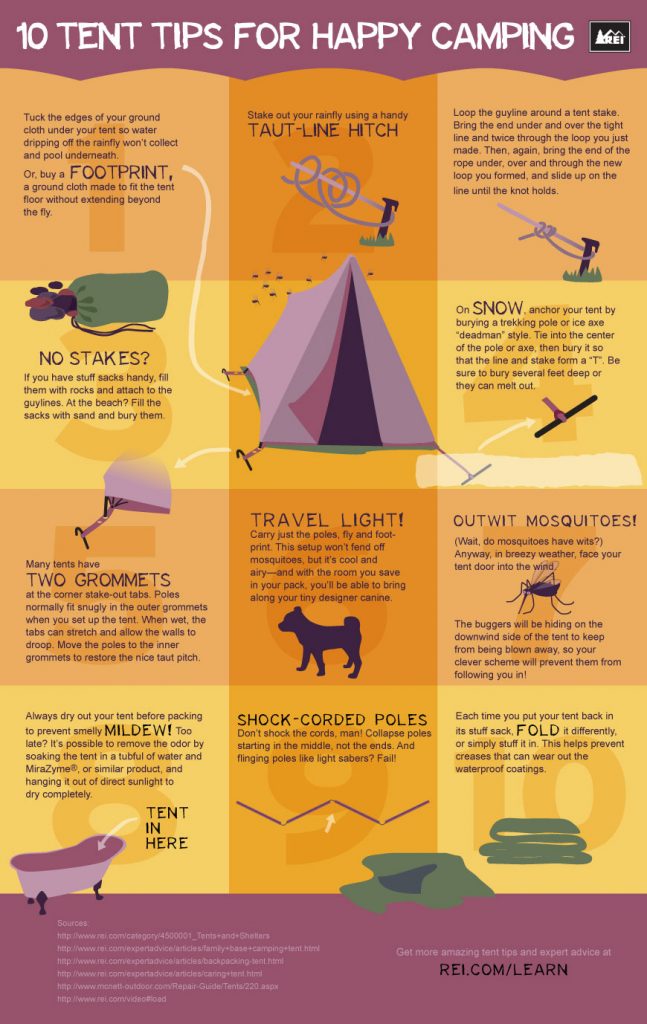The rain fly is a vital component of your camping tent, securing it from rainfall, wind and rough sunshine. Whether you pick a large multi-room camping tent or lightweight backpacking camping tent, you'll locate that a top quality rainfly boosts your exterior experiences.
Seek a rainfly with long lasting materials and a high water-proof rating. Take into consideration the weight and packability of a rainfly when selecting it for backpacking journeys.
Sleeping Outdoor tents
A rainfly offers added protection for your outdoor tents from unexpected showers. Its style disperses rain and snow and aids prevent water from merging on the top of your outdoor tents. This can trigger the textile to sag and cavern, resulting in leaks.
Modern rainfly materials consist of polyurethane or silicone coverings to use extraordinary waterproofing. Several likewise include sealed joints to stop water from leaking via stitching. Some even have reflective spots to aid you locate your camping tent in low-light problems.
Choose a rainfly that shows the environment and outdoor camping conditions you come across most frequently. For instance, desert campers require a rain fly that blocks wind and UV rays. Backpackers need to consider ultralight rainfall flies to decrease pack weight without compromising defense. Try to find adjustable accessory factors that allow you to transform the tension on the fly to make sure that it is tight and positioned appropriately to prevent leaks. A well-positioned rainfly can likewise manage temperature level and reduce condensation inside the camping tent.
Tarpaulin
Tarpaulins are functional pieces of camping gear, and a tarpaulin sanctuary can be among the most comfortable choices for camp. In addition to having the ability to be set up in unlimited ways, tarpaulins also have a tendency to call for less equipment than camping tents and are much lighter in weight.
A significant benefit to tarp shelters is that they enable ample air flow. While this canvas tarp can be a drawback for some campers, who might like to have a much more enclosed space, it is an essential factor in maintaining occupants from overheating and reducing the accumulation of condensation that can compromise the material.
Just like various other arrangements, when setting up a tarp shelter, make certain the ridge line is established at an angle to assist straight rainfall and snow away from the shelter. A good ridgeline can also keep wind from blowing the tarpaulin around. Make sure the tarp is protected correctly with suitable tying techniques, such as a prusik knot (or sliding knot), at elevations that develop adequate head space and are not a tripping risk, and slope the tarpaulin suitably for water drainage.
Protection
A rainfly is among the most essential pieces of camping equipment to cause any trip. It shields your outdoor tents from climate that can swiftly alter, allowing you to remain comfy and enjoy your wilderness adventures.
Modern rain fly layouts use more than just waterproof defense. Some have integrated solar panels to help you maintain billed on the go, while others have adjustable vents for airflow to minimize condensation accumulation. Choosing a rainfly that fits your requirements and preferences is critical for the overall experience.
Seek light-weight materials, such as nylon or polyester, and polyurethane finishings to improve water resistance. Likewise think about the rainfly's head hydrostatic pressure score, which assists you evaluate its ability to hold up against rains and wind. Bear in mind that rainfall flies commonly need to be cleansed after each usage, given that dust can wear on the water resistant layer. It's best to tidy and store it in a cool, completely dry place to prevent mold and mildew.
Sanctuary
A rainfly is a crucial piece of equipment for your hammock, securing you from the aspects and making sure that you can sleep pleasantly. When selecting a rainfly, take into consideration the climate and problems in which you'll be camping. For example, tropical environments may require a rainfall fly that has high humidity and UV security. Other factors to consider include material type and weight. Try to find options that are light-weight and made from durable products that resist abrasions and spots.
If you don't have a rain fly, you can create a makeshift sanctuary utilizing a tarp. Nevertheless, it's best to set up your rainfall protection initially before setting up the rest of your camping tent. This ensures that you can swiftly and easily enter and out of your hammock in case of an unexpected tornado or modification in climate. Also, make certain that your rainfall fly is correctly secured to stop flapping in the wind. Remember that rainfall flies and pest nets must be cleansed consistently to avoid mud, mold and mold from developing in time.
